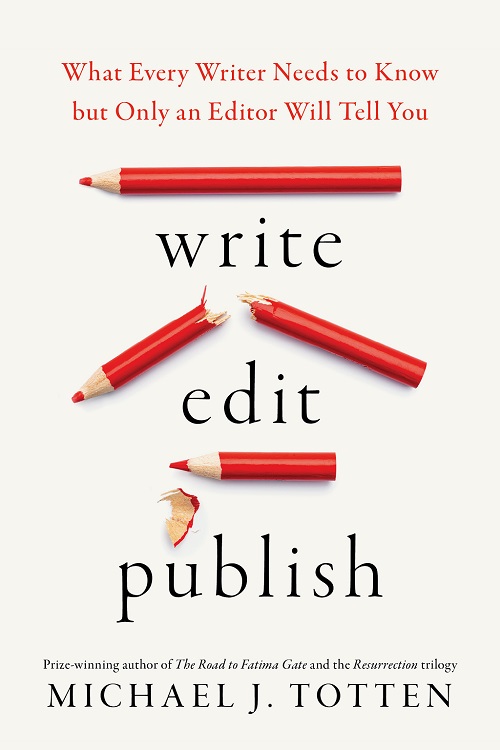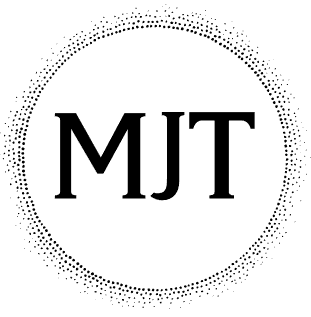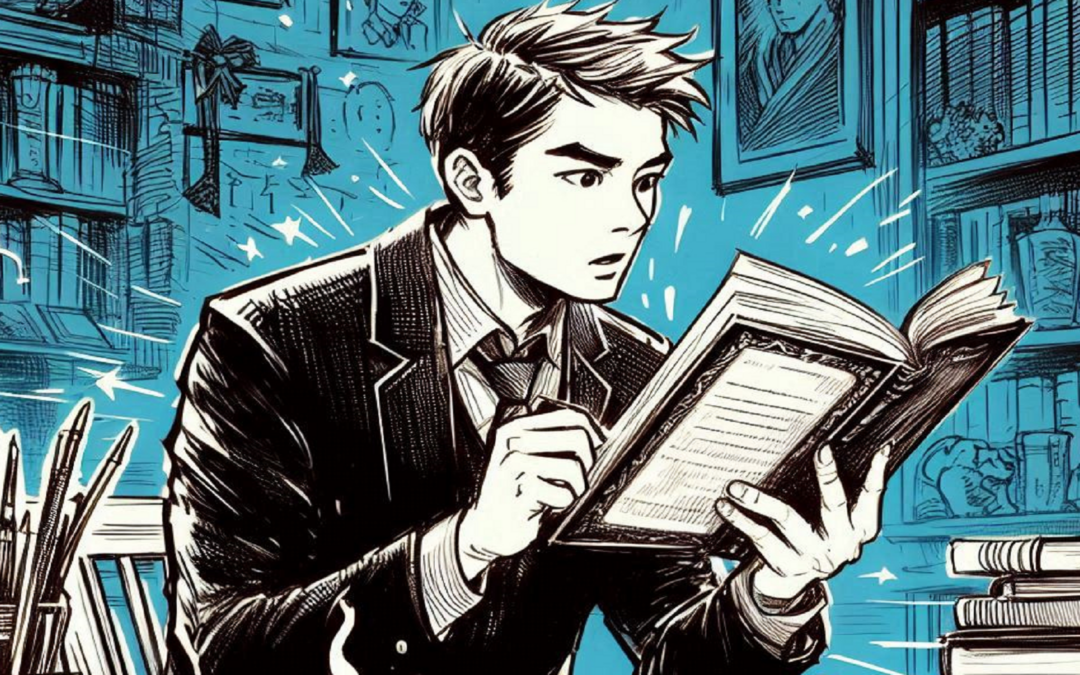Okay, let’s say you’ve nailed your first sentence. You start with some kind of disturbance or tension or conflict or a question. Now what? What does the rest of the first page look like?
There is no formula, no single correct way to proceed. I can tell you how not to proceed, but if you’re a master of the craft, you can do it “the wrong way” and still pull it off with aplomb. I can think of several examples of terrific openings that “break the rules” just sitting here at my desk and without consulting my bookshelf.
But I can tell you that when a first page doesn’t work, it’s usually for one of the following reasons.
Too Much Backstory
Nobody cares when and where your character was born. Not on the first page anyway. Yes, you can find examples of this kind of backstory on the first page in books that have been published, and yes, a master of the craft can open with a compelling backstory even for today’s audiences with their lobotomized attention spans, but if you’re that writer, you don’t need my help, and since you’re probably not that writer, just trust me on this: no backstory on the first page. Write about what’s happening to your character in the present moment at the beginning of the story.
Not Enough Setting
Readers imagine books they’re reading as if they’re movies playing in their minds. Sure, they’ll fill in some of the details themselves. They might imagine your male lead with the face of the actor who played Jon Snow in Game of Thrones or your female lead with the leading actress in the Australian horror flick Killer Sofa about a reclining couch possessed by a demon. But they won’t even be able to fill in the blanks if you don’t help them out. If your opening scene takes place in a moving car without you making that clear until the second page, readers will fill in that blank with something, which could be anything really—a restaurant, the kitchen in the house they grew up in, a coffee shop. And then, on page 2, when you suddenly spring it on them that—surprise!—Fatima and Fulgencio have been hurtling down Interstate 5 from San Francisco toward Los Angeles the entire time, you will create a serious record-scratch moment. Readers will have to retcon the entire “movie” they’ve been playing in their minds since your opening sentence.
Oh, and if the reason Fatima and Fulgencio are hurtling down the freeway is that they just robbed a bank in Oakland and have somebody’s granny tied up in the trunk, put that in the first paragraph, not on page 2.
Set the scene right away. Firmly ground readers in a specific time and place. Include concrete details from all five senses if you can. Taste and smell are optional, but if we can taste the bitter black coffee and smell the sizzling bacon, you’ll be off to a great start.
Don’t go overboard and get all flowery and poetic with your descriptions unless you naturally write that way and intend to do so throughout your book. Your first page is the only chance you’re going to get to make a first impression, and readers will assume that whatever you do on that page is what you’re going to do on most of the pages that follow. If you’re writing a fast, hardboiled crime thriller, sketch the scene using a few gritty details. If you’re writing a southern gothic, by all means, knock yourself out and describe the setting in luxurious detail, but avoid overwrought purple prose like the fate of the human race depends on it.
Telling Instead of Showing
Don’t tell us your character is a cop. Show us by having him flash his badge. Don’t tell us your character is a burglar. Have him pry open the back door of a dark house using a crowbar. Don’t tell us your romantic female lead loves gardening. Show us by having her glance up from the rose bushes, clippers in hand, as a mysterious black SUV with tinted windows pulls into her driveway.
Too Much Narrative Summary
Narrative summary is the opposite of dramatization. It’s like a fast-forward button that provides lots of information using as few words as possible, omitting things like dialogue and description and standard scene structure. Like this:
Reginald and Beryl spent the evening working out their household budget, cleaning up the kitchen, and putting the kids to bed.
Narrative summary cannot be filmed. Not easily anyway, and not in the amount of time it takes to read it. It certainly can’t be acted out on stage in a play without boring the bejesus out of the audience. The whole point of narrative summary is to fast-forward through the boring parts of a story and to give readers a moment to catch their breath after a suspenseful or emotionally exhausting scene.
It (usually) doesn’t belong at the beginning of your story. Yes, there are exceptions. Lots of them, actually. It’s not “against the rules,” and it certainly isn’t a literary crime. It’s not even all that uncommon. I could provide you with some examples of how to effectively begin a novel with narrative summary, but I don’t want to encourage you. Instead, I’m encouraging you not to use it at the very beginning, or at least to use narrative summary as little as possible on the first page and the pages that follow, again not because you “can’t” but because it’s so easy to screw up and write an intro that doesn’t grab readers’ attention.
If you’re not confident about when, where, how, and why to use narrative summary, if you’re unsure about its drawbacks and why it’s almost always best to use it in small doses, skip the summary and dramatize as much of your opening page (and opening chapter) as you can.
Not Enough Tension or Conflict
Don’t begin your story with smiling people in Pleasantville. You don’t need to start with the Holocaust, a car accident, or a dead body in the park, but you do need to have some conflict or tension, and if you don’t, readers will yawn and wonder what’s in the fridge.
Introducing Too Many Characters
If you introduce too many characters at a time, readers will struggle to remember who’s who, especially if they speak and act in more or less interchangeable ways. You’ll need to keep this in mind during all your early chapters and especially at the beginning of your first. If you have three or more characters on your first page, see if you can reduce them to two.
Lack of Clarity
It needs to be 100 percent obvious exactly what’s happening, who your viewpoint character is, where your viewpoint character is, what’s going on, and who else is in the scene. If you find yourself needing to explain a bunch of things so that readers can follow what’s happening, back up, start over, strip it down, and keep it simple.
Describing Your Character’s Physical Appearance
If your character is the size of a gorilla and is covered with scars, by all means, let us know right away, but nobody cares if he stands five feet ten and has brown hair, especially not on the first page. Don’t get hung up on the idea that readers need to “see” your character exactly as you do. They’re going to conjure up their own image of what your character looks like anyway.
Nor will readers care about your character’s clothing unless it’s somehow relevant to the setting, to your character, or to what’s happening. It might make sense to describe your character’s mud-covered work boots if the scene takes place in a barn, but if the opening scene is in an office, it’s not important or even interesting that your character is wearing a blue shirt. It would be interesting if he’s wearing a loud orange shirt and a pink tie, like Saul Goodman in Breaking Bad, but your character had better be the type of person who actually wears such an outfit, and by describing such an outfit, you’ll be showing us something about his character in ways that you wouldn’t if you described a standard-issue blue shirt.
* * *
If you’re going to start with a conventional opening scene—which is precisely what you should do if you’re new at this—here’s what you need to do on the first page:
- Establish your point-of-view character.
- Describe a concrete setting that readers can easily picture in their minds.
- Present your viewpoint character with a problem as early as possible, preferably in the first sentence.
- Move the story forward a tad with some action, dialogue, or both.
- Open a story question that readers will want answered, but don’t answer it right away.
That’s it. Take a look at the opening page of Killing Floor by Lee Child, the first book in the Jack Reacher series:
I was arrested in Eno’s Diner. At twelve o’clock. I was eating eggs and drinking coffee. A late breakfast, not lunch. I was wet and tired after a long walk in heavy rain. All the way from the highway to the edge of town.
The diner was small, but bright and clean. Brand-new, built to resemble a converted railroad car. Narrow, with a long lunch counter on one side and a kitchen bumped out back. Booths lining the opposite wall. A doorway where the center booth would be.
I was in a booth, at a window, reading somebody’s abandoned newspaper about the campaign for a president I didn’t vote for last time and wasn’t going to vote for this time. Outside, the rain had stopped but the glass was still pebbled with bright drops. I saw the police cruisers pull into the gravel lot. They were moving fast and crunched to a stop. Light bars flashing and popping. Red and blue light in the raindrops on my window. Doors burst open, policemen jumped out. Two from each car, weapons ready. Two revolvers, two shotguns. This was heavy stuff. One revolver and one shotgun ran to the back. One of each rushed the door.
I just sat and watched them. I knew who was in the diner. A cook in back. Two waitresses. Two old men. And me. This operation was for me. I had been in town less than a half hour. The other five had probably been here all their lives. Any problem with any of them and an embarrassed sergeant would have shuffled in. He would be apologetic. He would mumble to them. He would ask them to come down to the station house. So the heavy weapons and the rush weren’t for any of them. They were for me. I crammed egg into my mouth and trapped a five under the plate. Folded the abandoned newspaper into a square and shoved it into my coat pocket. Kept my hands above the table and drained my cup.
The setting is vivid and clear, and the character has an obvious problem. We learn some things about this character, that he pays keen attention to his surroundings and has a pretty good idea about how law enforcement works, without the author ever telling us that Jack Reacher is a former military police officer.
And there’s an open story question that will all but compel readers to continue onto the next page: Why is this guy being arrested, especially since he hasn’t even been in town for an hour? What could he possibly have done? You don’t have to follow my checklist or use Lee Child’s opening as a model for how to write a killer first page, but readers want you to whether they consciously know it or not.
*
If you enjoyed this post, you can read so much more in my book Write, Edit, Publish: What Every Writer Needs to Know but Only an Editor Will Tell You. You can also hire me as a developmental editor, line editor, copy editor, or publishing consultant. Tell me what you’re working on, send me your questions, ask for a free sample edit, or just say hi.


